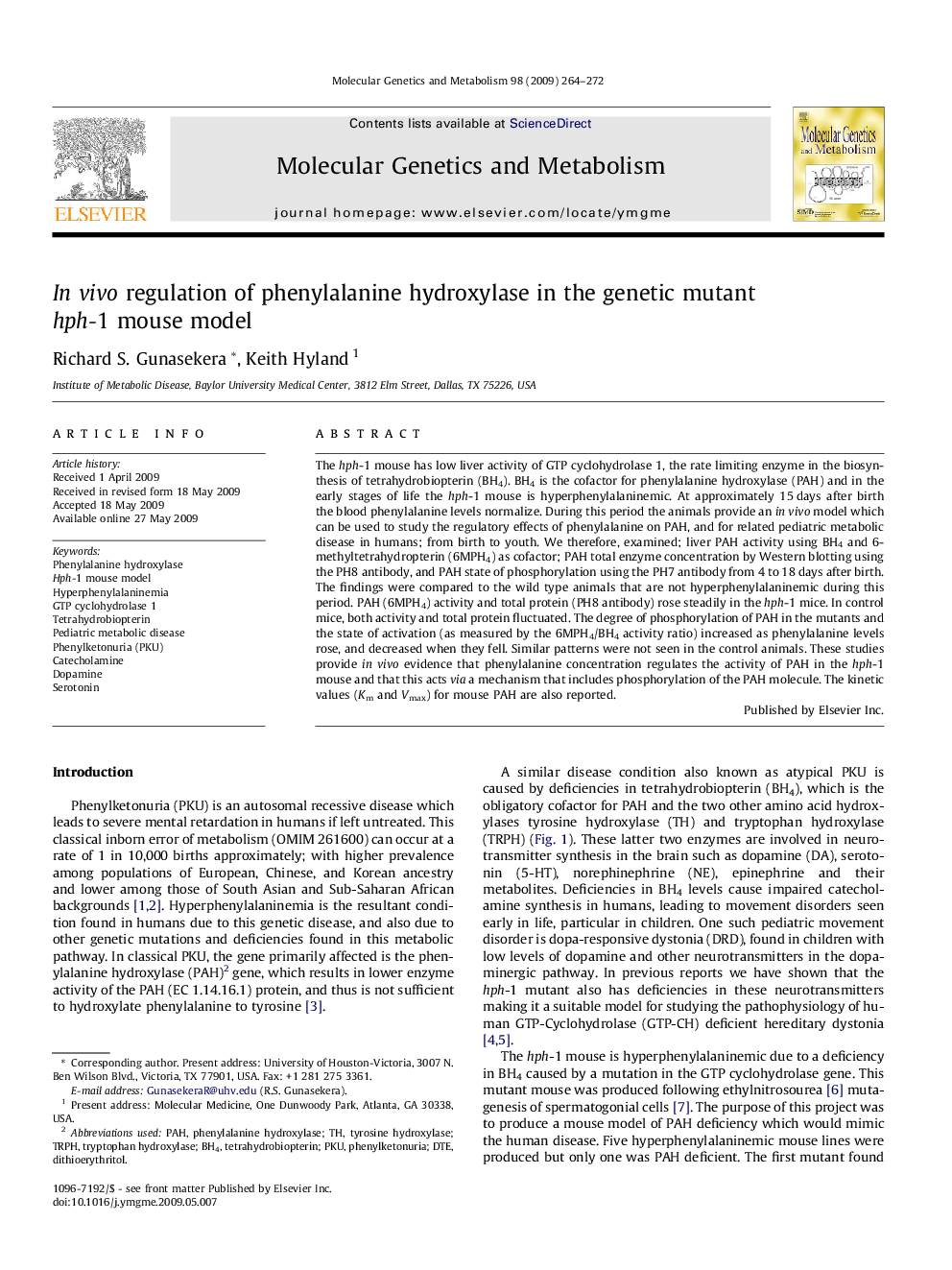| Article ID | Journal | Published Year | Pages | File Type |
|---|---|---|---|---|
| 1999782 | Molecular Genetics and Metabolism | 2009 | 9 Pages |
The hph-1 mouse has low liver activity of GTP cyclohydrolase 1, the rate limiting enzyme in the biosynthesis of tetrahydrobiopterin (BH4). BH4 is the cofactor for phenylalanine hydroxylase (PAH) and in the early stages of life the hph-1 mouse is hyperphenylalaninemic. At approximately 15 days after birth the blood phenylalanine levels normalize. During this period the animals provide an in vivo model which can be used to study the regulatory effects of phenylalanine on PAH, and for related pediatric metabolic disease in humans; from birth to youth. We therefore, examined; liver PAH activity using BH4 and 6-methyltetrahydropterin (6MPH4) as cofactor; PAH total enzyme concentration by Western blotting using the PH8 antibody, and PAH state of phosphorylation using the PH7 antibody from 4 to 18 days after birth. The findings were compared to the wild type animals that are not hyperphenylalaninemic during this period. PAH (6MPH4) activity and total protein (PH8 antibody) rose steadily in the hph-1 mice. In control mice, both activity and total protein fluctuated. The degree of phosphorylation of PAH in the mutants and the state of activation (as measured by the 6MPH4/BH4 activity ratio) increased as phenylalanine levels rose, and decreased when they fell. Similar patterns were not seen in the control animals. These studies provide in vivo evidence that phenylalanine concentration regulates the activity of PAH in the hph-1 mouse and that this acts via a mechanism that includes phosphorylation of the PAH molecule. The kinetic values (Km and Vmax) for mouse PAH are also reported.
